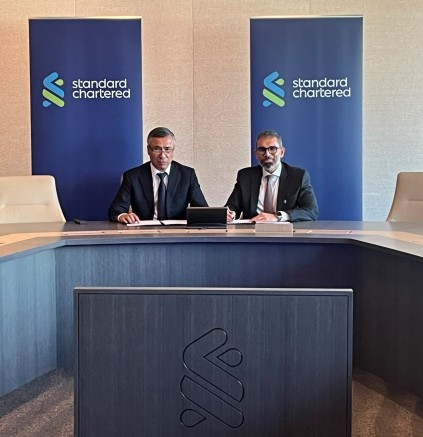A funding gap of €40 million must be closed to finance urgent work addressing the imminent danger caused by radioactive and toxic waste in Central Asia, according to a new cost estimate published by the International Atomic Energy Agency (IAEA) during its General Conference in Vienna today.
Led by the European Union (EU), the international community established the Environmental Remediation Account for Central Asia (ERA) in 2015 to address the legacy of Soviet uranium mining in the region. Managed by the European Bank for Reconstruction and Development (EBRD), the ERA has brought significant progress, with work at two critical sites in the Kyrgyz Republic approaching completion ahead of schedule and within budget.
However, five more sites in the region are in urgent need of rehabilitation. While work on a new site in the Kyrgyz Republic and – for the first time – one in Uzbekistan is scheduled for next year, more funding is needed to complete the programme and mitigate the existing danger to people and the environment in Central Asia.
Call for action
During the IAEA General Conference today, a renewed call was made for additional donor funding in order to tackle the most urgent problems, as all parties directly involved renewed their commitment with the signing of a revised Strategic Master Plan (SMP).
At this event, Marjeta Jager, Deputy Director-General at the Directorate-General for International Partnerships of the European Commission, expressed satisfaction with the excellent cooperation and the progress made so far: “In line with the United Nations Sustainable Development Goals, the key objective of the EU’s intervention is to protect the planet from degradation, preserving it for present and future generations. Concerted efforts are needed to prevent the negative impact of past uranium mining and production.”
Balthasar Lindauer, EBRD Director, Nuclear Safety Department, welcomed the revised plan. “The renewed coordinated approach to remediation of uranium legacy sites in Central Asia will allow the EBRD to continue to work effectively and ensure safe and sustainable funding decisions,” he explained. “The steps taken should allow other donors to join the Environmental Remediation Account of the EBRD.”
The challenge
Central Asia served as an important source of uranium in the Soviet Union. Many of these sites are concentrated along the tributaries of the Syr Darya River, which runs through the densely populated Fergana Valley. This is the agricultural heart of the region and shared by the Kyrgyz Republic, Tajikistan and Uzbekistan.
Today, abandoned mining and processing sites endanger the environment and the health of the local population and impede economic development. There is a real risk of radioactive pollutants and heavy metals entering into the cross-border river system and causing an ecological disaster.
The response
The ERA fund was established at the initiative of the EU in 2015 and became operational in 2016. The EBRD was mandated to act as fund manager, building on the Bank’s expertise in overseeing nuclear decommissioning projects in its regions. The EU is the biggest donor, while to date the ERA fund has also received contributions from Belgium, Lithuania, Norway, Spain, Switzerland and the United States of America.
The fund’s work has already visibly transformed several priority areas by removing contaminated waste material and dilapidated structures. Mine shafts have been closed, poisonous material has been safely stored and new water systems have been installed.
Strategic Master Plan
The updated SMP provides a renewed framework for permanently resolving the uranium legacy in Central Asia. The plan serves as the basis for the coordinated effort of multiple parties and ensures the optimal use of limited resources. The Kyrgyz Republic, Tajikistan and Uzbekistan, as well as the IAEA, the EU, the EBRD and the Russian State Atomic Energy Corporation (Rosatom), have endorsed the plan.
The SMP 2021 will be published by the end of the year. It will outline the current status of the uranium legacy sites in the Kyrgyz Republic, Tajikistan and Uzbekistan, including updated cost estimates for their remediation.












